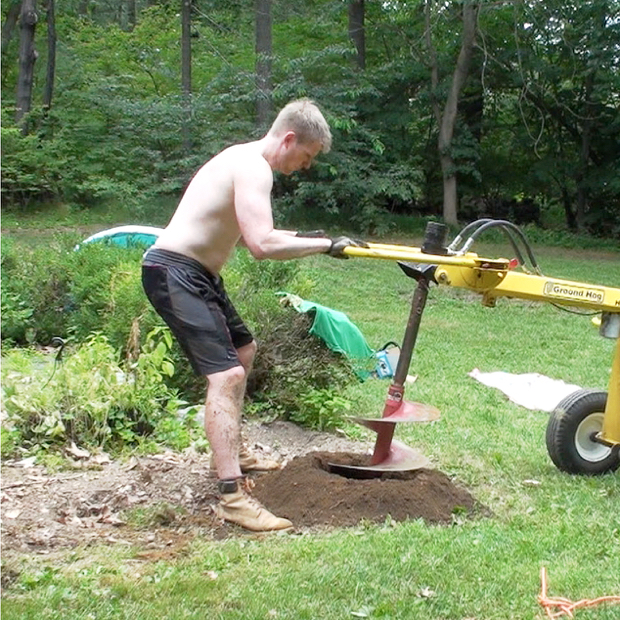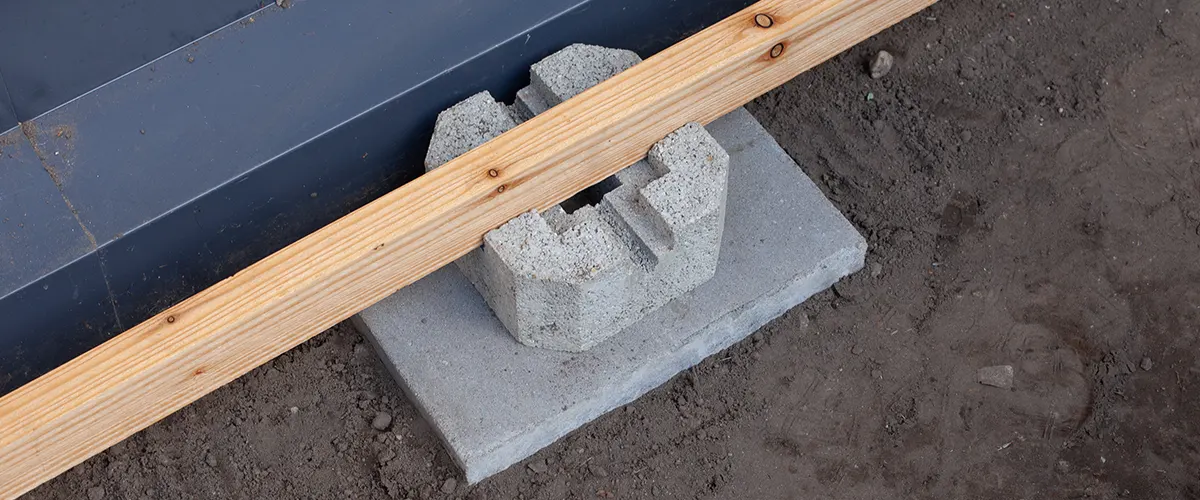Selecting the Right Deck Footings for Stability and Toughness
The long life and security of your deck depend heavily on the type of footings you choose, as they offer the important support and stability to endure the test of time. In this conversation, we will certainly check out the various kinds of deck grounds, think about the essential factors to weigh when making a decision, and dig right into the pros and disadvantages of different alternatives.
Kinds of Deck Grounds
There are several kinds of deck footings that can be used, each offering distinct benefits and considerations. One typical kind of ground is the concrete pier ground. These footings are composed of a cylindrical opening loaded with concrete, which supplies a strong structure for the deck blog posts. Concrete pier grounds are fairly very easy to mount and offer outstanding stability, making them a prominent option for several deck tasks.
One more kind of ground is the helical heap ground. Helical piles are steel shafts with helical plates connected to them. These footings are mounted by screwing them into the ground, which creates a secure structure for the deck. Helical heap grounds are optimal for locations with difficult soil conditions, as they can be mounted in virtually any sort of soil. If needed., they additionally enable for easy change and leveling of the deck.
Alternatively, some building contractors decide for precast concrete grounds. These footings are constructed from resilient concrete and come in numerous sizes and shapes to suit different deck layouts. Precast concrete grounds are hassle-free to mount and provide a steady base for the deck structure.
Ultimately, an additional alternative is the post-in-anchor footing system. This sort of ground includes driving a metal anchor right into the ground and connecting it to the deck message. It supplies flexibility in regards to placing the deck messages and is appropriate for decks with light-weight structures.
When choosing the appropriate sort of deck footing, it is essential to take into consideration aspects such as soil problems, deck lots, and local building regulations (Deck Footings). Consulting with a professional specialist or structural engineer can aid make certain the suitable footing is selected for a steady and secure deck
Variables to Take Into Consideration When Selecting Footings
When picking the ideal grounds for a deck, it is critical to meticulously think about different elements such as soil conditions, deck tons, and adherence to local building ordinance. These elements play a substantial duty in ensuring the security and longevity of the deck framework.
One of the main factors to consider is the soil problems. The kind of soil on which the deck will be built establishes the sort of footings needed. As an example, decks developed on loosened or sandy dirts might require deeper footings to provide ample support and protect against settling. On the other hand, decks constructed on clay or large dirts might call for grounds that can suit the soil's tendency to expand and contract.
Another vital variable is the deck lots. The weight of the deck, including the products used and any type of potential live lots such as furnishings or celebrations, have to be taken into consideration when picking grounds. The grounds have to be created to birth the weight of the deck and distribute it uniformly to stop any structural problems or failures.
Finally, adherence to local structure codes is critical. Building codes differ from region to region, and it is important to abide by the specific needs set by the regional authorities. Deck Footings. These codes make certain that the deck is built safely and fulfills the necessary requirements for architectural honesty and load-bearing ability
Concrete Grounds: Cons and pros

Concrete footings offer numerous advantages and downsides when used as the foundation for a deck. On the positive side, concrete footings supply superb security and sturdiness.
Another benefit of concrete grounds is their convenience. They can be put into various shapes and sizes to accommodate numerous deck styles and configurations. Concrete footings can be customized to fit the particular demands and image source demands of the deck structure.
Nonetheless, there are additionally some downsides to utilizing concrete footings. One significant negative aspect is the cost and labor associated with their installment. Concrete grounds call for excavation and often require the aid of heavy equipment. This can boost the overall cost of the deck task and might need professional support.

Helical Piers Vs. Sonotubes: Which Is Much better?
In considering the foundation alternatives for a deck, the contrast between helical piers and sonotubes is essential in identifying the exceptional choice. They are turned into the ground using hydraulic equipment, giving a resilient and stable structure for the deck.
The helical plates on the piers produce a solid hold with the dirt, stopping any motion or changing of the deck. Sonotubes, on the other hand, count entirely on the concrete loading for stability, which might not provide the very same level of stamina and resistance.
In regards to installment, helical piers are fairly less complicated and faster to set up contrasted to sonotubes. The hydraulic equipment used to turn the piers into the ground makes sure a fast and effective process. Sonotubes, on the other hand, require digging holes and putting concrete, which can be time-consuming and labor-intensive.
In addition, helical piers are a more flexible choice. They can be made use of in various soil conditions and can be readjusted or strengthened if required. Sonotubes, on the various other hand, might require additional support, such as rebar, in specific dirt problems or locations with high load requirements.
Selecting the Right Footings for Your Deck's Dimensions
For ideal architectural honesty, it is vital to meticulously pick the appropriate footings that align with the dimensions of your deck. The measurements of your deck, including its size, height, and width, play a considerable function in identifying the type and size of footings required.
When selecting footings for your deck, it is essential to consider the load-bearing ability of the dirt. The weight of the deck, incorporated with the weight of any furnishings or individuals on it, puts in a considerable force on the footings (Deck Footings). It is vital to select footings that can adequately sustain this weight without moving or sinking over time.
Bigger decks with greater measurements need larger grounds to provide adequate stability and assistance. The shape of the grounds, whether they are round or square, depends on the design and format my sources of the deck.
Conclusion
In conclusion, choosing the best deck grounds is critical for ensuring stability and longevity. Factors such as the type of footings, the deck's dimensions, and the pros and cons of different choices need to be considered.
These grounds are composed of a cylindrical hole filled up with concrete, which offers a solid foundation for the deck articles. Concrete pier footings are fairly simple to set up and use excellent security, making them a preferred selection for several deck tasks.
Precast concrete grounds are practical to mount and provide a secure base for discover here the deck framework.
It offers adaptability in terms of positioning the deck blog posts and is ideal for decks with lightweight frameworks.
Concrete grounds provide numerous benefits and downsides when utilized as the foundation for a deck.